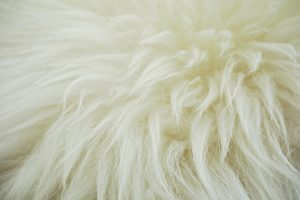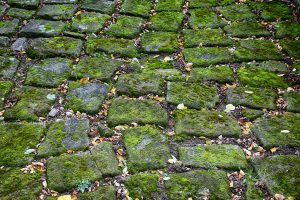blogger: Cynthia Ruchti
What’s your book’s texture?
Although we could talk about slick or matte-finish covers, about smooth or deckled edges of the pages, or the feel of a hardcover book compared to that of a paperback, for today’s purposes, we’re looking at–or rather, feeling–the texture of the writing.
 If you compared a dozen books pulled randomly from bookshelves, you’d describe some of them as burlap–rough, but steady and dependable. Others are like silk–smooth yet vibrant. Still others are common as cotton but with an intriguing weave that invites exploration. Some books have a sandpaper texture–abrasive, but for a reason. Sanding off our rough edges sometimes takes an abrasive book.
If you compared a dozen books pulled randomly from bookshelves, you’d describe some of them as burlap–rough, but steady and dependable. Others are like silk–smooth yet vibrant. Still others are common as cotton but with an intriguing weave that invites exploration. Some books have a sandpaper texture–abrasive, but for a reason. Sanding off our rough edges sometimes takes an abrasive book.
Stories can have a velour-soft texture of comfort, or a billowing organza-artistic feel. I’m reading a book now that is like raw silk–smooth, but with natural nubs. And the nubs are what I’m underlining.
Wool has improved over the years–curious for a natural fabric. Midwinter in the northwoods, I’m wearing wool socks that I would have refused as a child for the way they would have scratched at my ankles. Some writing styles that would have scratched and clawed at us years ago–sarcasm, for example–are finding greater acceptance. Has the sarcasm improved or have we grown tougher?
 What’s your book’s texture? Custard-soft? Cashmere? Dish scrubbie? Fleece? Leather? Cold steel? Burred? Is it marble or cobblestone? Why? And how do we know the “proper” texture for our project?
What’s your book’s texture? Custard-soft? Cashmere? Dish scrubbie? Fleece? Leather? Cold steel? Burred? Is it marble or cobblestone? Why? And how do we know the “proper” texture for our project?
We take these elements into consideration:
TOPIC
A tough topic can be handled tenderly. But by nature, some topics demand bold words, straight-forward talk, sparks and thunder. Other subject matter is too brittle to be handled that way.
GENRE
Consider the genre. How likely is it to find a thriller written in a pastoral, gently-ambling, glassy style? Shards of glass, maybe.
AUDIENCE
Do we have audiences left alive for whom comfort is not a core value? Other cultures don’t list comfort on their list of expectations. They have no list but survival. Nor do they fight as hard for comfort as we do, those of us who value ease above growth. One-touch purchases. Wheeled luggage (Thank You, God!). Roombas.
Is your audience younger or older? Affluent or middle class? Broken and wounded or healed and moving forward? The answer to all those questions will help in forming a texture for your work. 
YOUR UNIQUE VOICE
Why is there more than one mommy-blogger in the cyber universe? Because they each lend their own voice to the common concerns and delights of moms. Some drill down deep with their writing. Others offer quippy one-liners that stick to a mom’s ribs. Some use humor well. Others take a mentor-mentee approach. Some prefer chunky mashed potatoes and others smooth.
Your writer voice helps express the texture of your work. The lyricism or clipped nature of your narrative influences the texture. It’s influenced by your word choices. How many ways are there to create a word picture describing cold? The way you describe it, the picture you paint will be as different as the textural differences between the work of Picasso, Monet, and Andrew Wyeth.
What does it matter? Why do we care about the texture of our writing? Because the writers who understand the texture they’re best suited to write, the texture their genre and topic requires, and the texture that appeals to their target readers create a rich tapestry that invites touch.
Can you express the texture of your current work in progress in one or two words?

Fleece blanket!
Shirlee, that is accurate.
You warm the cockles of my heart, Andrew.
Gentleman’s handshake.
Horse hair.
Claudia, that takes me back, for I spent a LOT of hours braiding manes at show-prep time.
VERY descriptive, Claudia!
Hmmm … this is hard. I would say that the fabric of my current WIP (a snarky YA) is made from thistledown. Light and airy upon first glance, but really, in the end, it’s made from thistles and there is bite there and bristle-filled truths all wrapped up in the laughter and fun.
Smiling over all these descriptions!
Good morning, Mrs. Ruchti, and I hope that the dawning year has bid you fair. You pose an interesting question, and upon pondering this challenge, I arrive at the hope that the texture of my writing is that of a silk turban.
Good to see you back, Surpreet.
Warm fleece on steel. I write stories of forgiveness and love born of unshakable faith.
For you, Carol, I would have said ‘dewy meadow’; there is a morning freshness to your writing that promises a good day ahead.
Maybe a New Mexico meadow with cactus hiding in the long grass, waiting for the unexpecting soul who isn’t in leather-toed shoes?
Or the cactus awaiting the haughty sandal-shod Roman, ready to bring him to his physical and metaphorical knees?
Nice word picture!
Cotton tapestry…soft, raw, warm, intricately woven, and resilient, even when frayed.
Intriguing!
Thanks, Cynthia! ?
What a great question. I would say my current work is like brushed denim. Smooth, comfortable and enduring. At least, that’s my hope. 🙂
Jeanne, that sure applies to your blog, and your fiction that I have been privileged to read.
Yes, Cynthia. I can! It’s fun to think of our writing in this way!
Andrew, thank you for these encouraging words!
Can you see how that would be a guiding influence as you write? I can!
This helped me so much! I’m struggling with a blog post. The words are true to my message, but something wasn’t right. Now, I know it is the texture! I can fix that.
What a beautiful way to explore this topic. Thank you.
Glad to help, Kathy!
Cynthia, I absolutely love how you connect our senses to writing ~ rhythm, now texture! I’ve given thought to the rhythms in my writing. Have to consider texture labels. I’ve thought of this very thing as I wrote a proposal. Kristy Cambron’s The Butterfly & the Violin and A Sparrow in Terezin highlighted this for me. she writes lovely, lyrical, soft paragraphs ~ about people in Nazi death camps! As dissonant as those are, I think her gentle style allows her to present some situations that readers might otherwise shut the book and sob.
Great thoughts, Mary Kay.
Hmm, what a fascinating question! I’ve never thought of characterizing my work in this way. I’d say my current WIP is probably like sandpaper. Rough on the surface, but with smooth depth underneath. (I’m writing romantic suspense, so I think that works. 🙂 )
Good description, Jerusha.
Beaitiful post, Cynthia. Thank you. You’ve helped me see that my WIP is written with a gentle, pastoral style. I hadn’t noticed that before!
It’s an interesting exercise, isn’t it?
Love this analogy! I’m going with felted wool – sometimes soft, sometimes abrasive; an end that defies prediction, but promises warmth nonetheless.
Of course, description is not my strong point, so I may be completely off, lol.
I think this is great, Angela.
My first thought in starting to read about texture was ‘voice.’ Sometimes you hear someone speak, then read one of their books, and you can HEAR their voice, pauses, inflection, emphasis.
Other times you read their book and wonder if they had anything to do with it, it just doesn’t ‘fit.’
I’ll take the former any day, as it makes the book feel like sitting down to a conversations with them.
So true, especially for an author you’re personally acquainted with. I love when I can “hear” written words this way!
So true, Rich.
I love the concept of this but really struggle with defining my texture in the context of material. I am lucky to match let alone know what the name of the material is. ? Could anyone provide me a list of material names and their texture qualities? ? I CAN say that mine is kind of like an old-time quilt, the ones made out of old clothes, rags, etc. You have places that are well worn, comfortable, and take you back to sweet memories. But then you also have the areas that are stained or worn through from difficult times and painful moments. You don’t want to leave them out because these pieces helped you grow into who you are. Oops, you said a couple words. How about rag quilt? Of course this yuckiness makes my mind muddled so maybe I didn’t even answer the question at all. Love the responses of everyone else.
Rag quilt is a great descriptor. I thought about using crazy quilt for mine…?
Cute, Angela.
Thanks, Crystal.
Hmmm, most of my writing is for the general market, not the Christian market. Yet, I do it without being churchy or preachy. I guess my texture, to borrow something from the construction industry, is
.
fresh, hot asphalt pavement
.
which is a mixture of materials, the individual parts unseen, joining together to form a durable but flexible wearing surface. Underneath the asphalt are courses of gravel and compacted soils. So too, underneath my secular books are the underpinning of a Christian worldview.
.
Also, asphalt pavement needs to have enough friction to keep the traveler’s vehicle from slipping, but be smooth enough to not make him take another route.
Great last paragraph! So visual.
The care-worn pages of an old KJ Bible, as my protagonist thumbs it open …
Not exactly one or two words. Good exercise, Cynthia.
Samuel, I LOVE this.
From you, Andrew my man, that’s great to hear.
I can “feel” that texture.
Oh, wow! You’ve given me something to think about and to chew over.
I think I’ll post this question at our next writers critique group and see what they think my texture is. I’m afraid I’m not a good judge.
How interesting and challenging. Thank you, Cynthia
It’s true that sometimes others (critique group or readers) can determine the texture of your work or at least add insights that the author hasn’t considered. It will be interesting to hear what they say.
Wood… The roughness of bark on trees in the wilderness of early America. Shifting with shadows and sunlight, and used to build the sturdy cabins of settlers. Gothic shadows revealed in a Gospel light. (sorry–not just a couple of words, but one thing led to another! 🙂
“Your writer voice helps express the texture of your work.” This was fun, Cynthia–and actually showed me more about how the ‘soul’ of my stories develop!
I love how one small concept can help us see our stories more clearly. Thanks, Patricia.
Sturdy cotton. (Breathes, comforts, binds wounds to allow healing)
What a wonderful exercise! Thank you for the prompt.
Breathes, comforts, binds wounds…Beautiful!
As an aspiring Love Inspired author, I am going to go with cotton candy. It might be a little too sweet for some folks, but those of us who appreciate the innocence and sentimentality of each story will find it sticking to our fingers, making us long for more.
Oh, I love this description. It exactly fits why have for years taken romance in small doses. But it does stick to your fingers. And once you get the taste of it, you are addicted. It is exactly like spun sugar.
*** EDIT *** why I have for years *** (Drat!)
Where would the world be without cotton candy? 🙂
PERFECT description, Joanne!